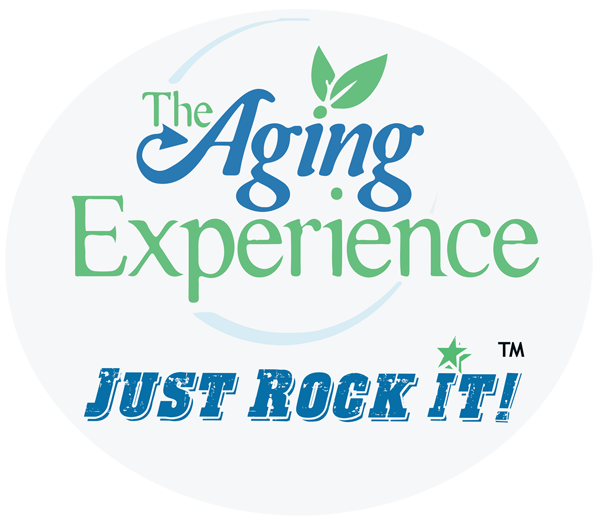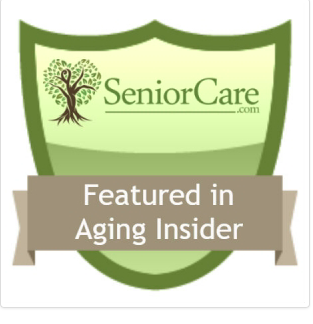Increasing Numbers of Older Adults in Substance Abuse Treatment
 Recent years have seen an increase in their admission to substance abuse treatment and increased injection drug use among those over the age of 50.
Recent years have seen an increase in their admission to substance abuse treatment and increased injection drug use among those over the age of 50.
Researchers affiliated with New York University’s Center for Drug Use and HIV Research (CDUHR), and NYU’s School of Medicine (NYUSoM) recently studied trends for opioid treatment programs, with an emphasis on older adults, in a study published in the Journal of Substance Use & Misuse. The investigation focuses on such trends in New York City, as it has one of the largest methadone treatment systems in the U.S. but could be representative of the population as a whole.
The study, “Demographic Trends of Adults in New York City Opioid Treatment Programs- An Aging Population,” used data collected by New York State’s Office of Alcoholism and Substance Abuse Services (OASAS).
“Most notably,” says Benjamin Han, MD, MPH, an instructor at NYUSoM and the study’s principle investigator, “we found a pronounced age trend in those utilizing opioid treatment programs from 1996 to 2012, with adults aged 50 and older becoming the majority treatment population.”
Specifically, individuals aged 50-59 which made up 7.8% of the total patient population in 1996, accounted for 35.9% of the population in 2012. Patients aged 60-69 originally accounted for 1.5% of patients and jumped to 12.0% of patients.
“These increases…suggests that we are facing a never before seen epidemic of older adults with substance use disorders and increasing numbers of older adults in substance abuse treatment. Those age 40 and below, who in 1996 accounted for 56.2% of patients were a fraction of that in 2012, responsible for 20.5% of total patients.
Older adults over the age of 60 were increasingly white, with a 10.3% increase in representation, while there was a 13.8% decrease in the percentage of black patients. For those aged 50-59 there was a larger increase in Hispanic patients (9.2%).
Researchers believe the increase in older adults utilizing opioid treatment programs is likely to continue into the next decade.
Slow Walking Speed Could Be Indicator of Alzheimer’s
 Slow Walking Speed Could Be Indicator of Alzheimer’s How fast elderly people walk may be related to the amount of amyloid plaques they have built up in their brains. These plaques are often associated with Alzheimer’s. So even if someone does not have the disease, their slower walking speed could be a risk indicator according to a study published in Neurologyå¨, the medical journal of the American Academy of Neurology. The study involved 128 people with an average age of 76 who did not have dementia but were considered at high risk for developing it because they had some concerns about their memory. Of the participants, 48 percent had a level of amyloid often associated with dementia. Participants were also tested on thinking and memory skills and how well they could complete everyday activities. A total of 46 percent of the participants had mild cognitive impairment. Walking speed was measured with a standard test that times people on how fast they can walk about 13 feet at their usual pace. The average walking speed was 3.48 feet per second. All but two of the participants tested in the normal range of walking speed. ÛÏItÛªs possible that having subtle walking disturbances in addition to memory concerns may signal AlzheimerÛªs disease, even before people show any clinical symptoms,Û said study author Natalia del Campo, PhD, of the Gerontopole and the Centre of Excellence in Neurodegeneration of Toulouse (University Hospital Toulouse) in France.
Slow Walking Speed Could Be Indicator of Alzheimer’s How fast elderly people walk may be related to the amount of amyloid plaques they have built up in their brains. These plaques are often associated with Alzheimer’s. So even if someone does not have the disease, their slower walking speed could be a risk indicator according to a study published in Neurologyå¨, the medical journal of the American Academy of Neurology. The study involved 128 people with an average age of 76 who did not have dementia but were considered at high risk for developing it because they had some concerns about their memory. Of the participants, 48 percent had a level of amyloid often associated with dementia. Participants were also tested on thinking and memory skills and how well they could complete everyday activities. A total of 46 percent of the participants had mild cognitive impairment. Walking speed was measured with a standard test that times people on how fast they can walk about 13 feet at their usual pace. The average walking speed was 3.48 feet per second. All but two of the participants tested in the normal range of walking speed. ÛÏItÛªs possible that having subtle walking disturbances in addition to memory concerns may signal AlzheimerÛªs disease, even before people show any clinical symptoms,Û said study author Natalia del Campo, PhD, of the Gerontopole and the Centre of Excellence in Neurodegeneration of Toulouse (University Hospital Toulouse) in France.
Loneliness Can Increase Risk of Premature Death by 14%
 Loneliness is more than a feeling. It is a major health risk that can increase the risk of premature death by 14 percent.
Loneliness is more than a feeling. It is a major health risk that can increase the risk of premature death by 14 percent.
A team of researchers, including leading loneliness expert John Cacioppo, has released a study on how loneliness triggers physiological responses that can ultimately make us sick.
Published in the Proceedings of the National Academy of Sciences it shows that loneliness leads to fight-or-flight stress signaling, which can ultimately affect the production of white blood cells.
Previous research from this group that essentially found that lonely people had a less effective immune response and more inflammation than non-lonely people.
Loneliness results in fight-or-flight stress signaling, leading to inflammatory genes and impaired anti-viral responses. The “danger signals” activated in the brain by loneliness ultimately affect the production of white blood cells, which in turn fight disease.
Eat Mediterranean Foods = Five Fewer Years of Brain Shrinkage
 Eat Mediterranean Foods = Five Fewer Years of Brain Shrinkage Following a Mediterranean-like diet may be associated with losing fewer brain cells due to aging, according to a study published inåÊNeurologyå¨,åÊThe Mediterranean diet includes eating more fish and plant-based foods and less meats and dairy. The study found that people following a Mediterranean-like diet had a larger brain volume than people who did not follow a Mediterranean diet. The difference between the two groups was about the same as five years of aging. ÛÏThese results are exciting, as they raise the possibility that people may potentially prevent brain shrinking and the effects of aging on the brain simply by following a healthy diet,Û said study author Yian Gu, PhD, of Columbia University in New York, NY, and a member of the American Academy of Neurology. The Mediterranean-like diet in the study includes high intake of vegetables, legumes, fruits, cereals, fish and monounsaturated fatty acids such as olive oil; low intake of saturated fatty acids, dairy products, meat and poultry; and mild to moderate amounts of alcohol. Eating more fish and less meat was associated with less brain shrinkage. ÛÏEating at least three to five ounces of fish weekly or eating no more than 3.5 ounces of meat daily may provide considerable protection against loss of brain cells equal to about three to four years of aging,Û Gu said. The study involved 674 people with an average age of 80 who did not have dementia. Gu noted that the study does not prove that the Mediterranean diet prevents brain shrinkage; it shows an association.
Eat Mediterranean Foods = Five Fewer Years of Brain Shrinkage Following a Mediterranean-like diet may be associated with losing fewer brain cells due to aging, according to a study published inåÊNeurologyå¨,åÊThe Mediterranean diet includes eating more fish and plant-based foods and less meats and dairy. The study found that people following a Mediterranean-like diet had a larger brain volume than people who did not follow a Mediterranean diet. The difference between the two groups was about the same as five years of aging. ÛÏThese results are exciting, as they raise the possibility that people may potentially prevent brain shrinking and the effects of aging on the brain simply by following a healthy diet,Û said study author Yian Gu, PhD, of Columbia University in New York, NY, and a member of the American Academy of Neurology. The Mediterranean-like diet in the study includes high intake of vegetables, legumes, fruits, cereals, fish and monounsaturated fatty acids such as olive oil; low intake of saturated fatty acids, dairy products, meat and poultry; and mild to moderate amounts of alcohol. Eating more fish and less meat was associated with less brain shrinkage. ÛÏEating at least three to five ounces of fish weekly or eating no more than 3.5 ounces of meat daily may provide considerable protection against loss of brain cells equal to about three to four years of aging,Û Gu said. The study involved 674 people with an average age of 80 who did not have dementia. Gu noted that the study does not prove that the Mediterranean diet prevents brain shrinkage; it shows an association.
Work Stress May Be Linked to Stroke
 Work Stress May Be Linked to Stroke
Work Stress May Be Linked to Stroke
Having a high stress job may be linked to a higher risk of stroke, according to an analysis of several studies published in the online issue of Neurology®, the medical journal of the American Academy of Neurology.
“Having a lot of job stress has been linked to heart disease, but studies on job stress and stroke have shown inconsistent results,” said Dingli Xu, MD, with Southern Medical University in Guangzhou, China. “It’s possible that high stress jobs lead to more unhealthy behaviors, such as poor eating habits, smoking and a lack of exercise.”
The analysis looked at all of the available research on job strain and stroke risk. The six studies analyzed involved a total of 138,782 participants who were followed for three to 17 years.
Jobs were classified into four groups based on how much control workers had over their jobs and how hard they worked, or the psychological demands of the job.
The analysis found that people with high stress jobs had a 22 percent higher risk of stroke than those with low stress jobs. Women with high stress jobs had a 33 percent higher risk of stroke than women with low stress jobs. People with high stress jobs were 58 percent more likely to have an ischemic stroke than those with low stress jobs. Ischemic stroke, which is the most common type of stroke, is caused by blockage of blood flow.
The researchers calculated that 4.4 percent of the stroke risk was due to the high stress jobs. For women, that number increased to 6.5 percent.









